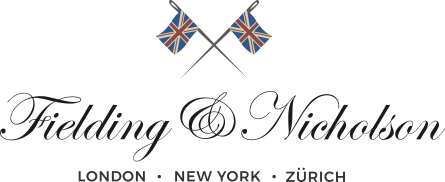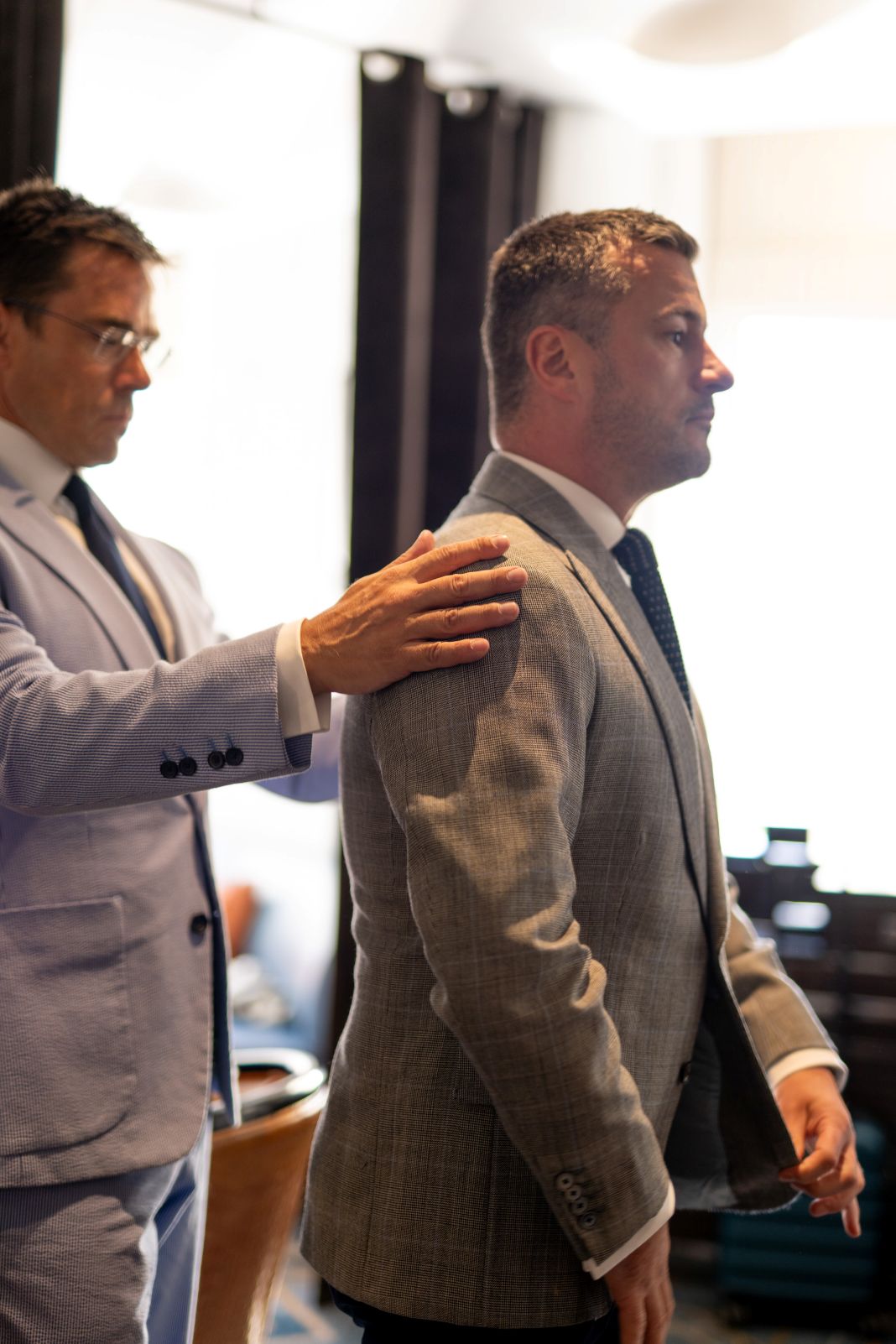What makes a truly great tailor and how can you tell before you commit?
You’re standing in front of a mirror in a navy suit that doesn’t quite feel like you. It’s the third one you’ve tried, and something’s still off. The tailor you choose plays a bigger role than you might expect. Appearance matters, but what you also need is trust, guidance and collaboration from your first conversation to final delivery. The best tailors offer more than style; they offer reassurance, consistency and quiet confidence. These ten questions help you separate true artisans from those simply taking orders.
Why Asking the Right Questions Matters
A skilled tailor has much in common with a thoughtful architect. They take time to understand your lifestyle, preferences and how you want to feel in your clothing. When you ask the right questions, you reveal more than their services, you uncover their values and how they treat their clients. If you’re unsure how to find a good tailor, these questions are the perfect place to start.
1. What is Your Specialism: Bespoke, Made to Measure or Something Else?
Tailoring terms get thrown around, and they don’t always mean what people think. Asking this upfront gives you clarity on what is truly being offered. A bespoke suit should begin with a pattern cut from scratch. Anything else is something different.
What to Listen For
- Clear reference to British Standards Institute or Savile Row Bespoke Association definitions
- Honest breakdown of hand finished versus machine sewn elements
- Insight into how their approach aligns with their house style
Quick Comparison: Suit Types
- Ready to Wear: Off the rack with standardised sizes
- Made to Measure: Adjusted from an existing template
- Bespoke: Designed and cut entirely for one person with high levels of handwork
Visit our London Showroom
Experience British tailoring craftsmanship first hand with a private visit.
2. Can I See Real Client Examples and Finished Suits You Have Made?
Portfolios and samples speak louder than promises. Instead of relying on generic showroom photos, ask to see completed suits, ideally across different builds, ages and occasions.
What to Look For
- Close up detail on stitching, lapels, buttonholes and overall balance
- Range across formalwear, casual tailoring and client types
- Evidence of consistency, not just one or two polished pieces
Why This Counts
Visual proof gives you confidence. It also helps confirm whether their aesthetic matches your expectations and supports your tailoring journey.
3. Which Fabric Mills Do You Use and Can I Feel the Difference?
The fabric you choose has a bigger impact than most realise. Experienced tailors will encourage you to explore different textures, weights and finishes.
Ask About
- Differences between super numbers and micron counts
- Suitability for the season and purpose
- Mills like Loro Piana, Dormeuil and Holland and Sherry
What Does a Good Fabric Feel Like in Hand?
Softness, breathability, subtle sheen and balanced weight. Touching real cloth samples builds a deeper connection to what you are commissioning. This hands on comparison adds richness to the tailoring consultation.
4. What is Your Tailoring Process and How Long Will It Take?
An organised process helps you plan better and builds trust. Great tailors are transparent about their timeline and what happens at each stage.
A Good Answer Covers
- Step by step guidance: consultation, measurements, basted fitting, forward fitting, final try on
- Expected timeframes for each phase
- Flexibility for remote clients or deadline driven projects
Example Timeline
- Week 1: Initial consultation and cloth choice
- Week 2 to 3: Measurements and custom pattern drafted
- Week 4: First basted fitting
- Week 6: Forward fitting with real adjustments
- Week 8: Final tweaks and hand pressing
5. How Many Fittings Will I Get and What Happens at Each Stage?
Each fitting allows the suit to evolve and improve. It is in these stages that refinement takes place and the shape begins to mirror your build and posture.
Look For
- Specific changes made at each stage
- Adjustments to posture, shoulder slope and sleeve length
- Time set aside for feedback and reflection, not just quick try ons
A good tailor will walk you through how each fitting builds on the last, and why it matters. The suit adjustment process should be collaborative, not rushed.
Book Your Tailoring Consultation
Speak with our experts near Savile Row and get advice on your first bespoke suit.
6. Who Cuts My Pattern and Is Everything Done In House?
The person who cuts your suit determines how it drapes and moves. Make sure you are not just speaking with a front of house team.
Ask
- Can I meet the person responsible for cutting my pattern?
- Is all tailoring completed within your workshop?
- What experience and background does your cutter have?
What to Avoid
- Red flag: “We outsource the pattern cutting but still call it bespoke.”
This question reveals where the real skill sits and whether quality is being protected from start to finish.
7. Do You Stick to a House Cut or Build the Style Around Me?
A house cut gives structure to a brand, but tailoring still needs flexibility. Great tailors guide, not dictate.
What to Find Out
- Whether their house style is British structured, Italian soft or something else
- How willing they are to adjust key elements like lapel width, jacket length or waist suppression
- If they help shape the design based on your posture and occasion
What to Avoid
- Red flag: “We use the same block for everyone, it works for most.”
The result should reflect your style and proportions, not just theirs. The best tailors combine fit preferences with personal service.
8. How Do You Handle Body Asymmetry and Changes Over Time?
Bodies change. No one is perfectly symmetrical, and good tailoring embraces that reality.
Ask About
- Adjustments for shoulder drop, hip tilt or curve through the spine
- How they archive your measurements and fit updates
- Whether they offer refitting or pattern updates if your shape evolves
Also consider asking if they have tailored for women or clients with unique physical needs. This shows adaptability and collaborative design.
Why This Matters for Long Term Fit
Tailoring for asymmetry and evolving body shape ensures your investment holds up over time and supports future wardrobe planning.
9. What Aftercare, Alterations or Support Do You Offer Over Time?
A long term relationship with your tailor adds value far beyond the first suit. Knowing what support exists after delivery builds trust.
What is Worth Knowing
- Do they press or restitch garments later?
- Will they keep your pattern securely on file?
- Are minor adjustments included or charged?
Aftercare is not just service, it is commitment. Look for tailors who offer ongoing support and long term suit care as part of their ethos.
10. How Will You Share Style Ideas and Help Me Decide?
Style is personal, but most people still want expert input. Good tailors present ideas visually, explain trade offs and are not afraid to offer guidance.
Ask
- Will you show examples or sketch ideas?
- Do you share pros and cons clearly before a decision?
- Are you comfortable saying no if something is not flattering?
Look for two things here: clarity and collaboration. A great tailor helps you find the best version of what you want and offers confident style advice without pressure.
Final Thoughts
These ten questions do not just help you find a tailor, they help you find someone who sees clothing as a shared project. Each one offers a window into how they think, how they work and whether they genuinely want the best for you.
If these questions helped you see your priorities more clearly, bring them along when you book. Any tailor worth trusting will welcome the conversation.
If you are looking for someone proud to be asked these questions, Fielding and Nicholson would be pleased to meet you. Visit our tailoring shop just off of Savile Row or explore our bespoke tailoring in London to begin your own bespoke suit journey.






